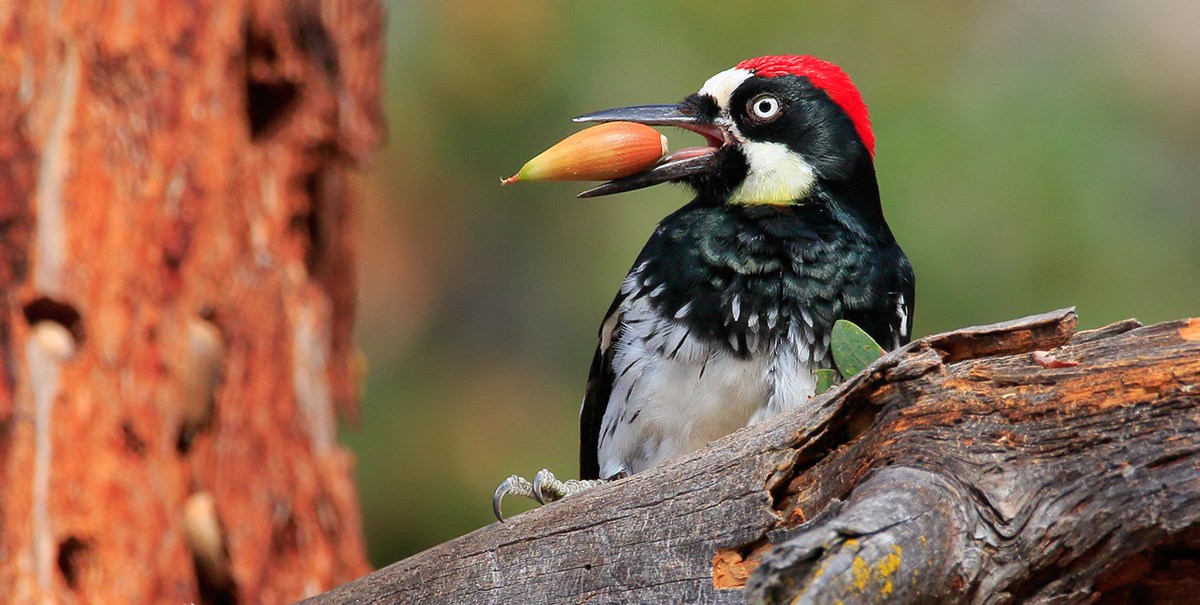Experiencing Woodpeckers in Florida: Types Diversity and Recognition
Woodpeckers Unleashed: Discovering the Marvels of These Experienced Tree Mountain Climbers
Woodpeckers, with their distinct markings and rhythmic drumming resembling with wooded locations, hold a special place in the bird world. Their specialized anatomy and adjustments enable them to browse vertical surface areas with unrivaled ability. However, their proficiency of tree climbing is just one facet of their interesting behavior. As we dig right into the elaborate details of woodpeckers' nesting behaviors, feeding methods, and the recurring preservation efforts to secure these exceptional birds, a much deeper recognition for their area in nature unfolds.
Makeup and Adaptations
When checking out the makeup and adjustments of woodpeckers, one can observe exceptional functions that enable these birds to thrive in their specialized eco-friendly particular niche. Furthermore, woodpeckers have zygodactyl feet, with two toes facing onward and 2 facing backward, giving a company grip on tree trunks while they look for food or drum for interaction.
Additionally, woodpeckers have an one-of-a-kind tongue structure that is long, barbed, and sticky, enabling them to draw out insects from crevices in timber. This specific adaptation permits woodpeckers to make use of a food resource that is hard to reach to numerous other bird types. In general, the makeup and adjustments of woodpeckers showcase the remarkable transformative options that have permitted these birds to flourish in their arboreal environment.
Drumming Habits
Having actually checked out the anatomy and adjustments of woodpeckers, the focus now shifts to comprehending their drumming actions, an unique aspect of their communication and territorial displays. Drumming is an important form of interaction amongst woodpeckers, offering multiple functions such as establishing areas, bring in companions, and signaling alarm. Each woodpecker species has an one-of-a-kind drumming pattern that assists individuals acknowledge participants of their own species and identify them from competitors or predators.
Woodpeckers produce drumming audios by rapidly pecking on resonant surface areas such as dead trees, energy posts, or also metal items, creating a series of rhythmic beats. The strength and rate of drumming can differ based on the purpose; as an example, a fast drumming sequence might symbolize aggressiveness in the direction of burglars, while a slower and softer drumming pattern might show courtship (Woodpeckers in Florida). In addition, woodpeckers might adjust the regularity and period of their drumming to convey certain messages successfully
Nesting Behaviors
Exploring the nesting habits of woodpeckers reveals fascinating insights right into their reproductive behaviors and environment options. Woodpeckers are recognized for their unique nesting preferences, often digging deep into dental caries in trees to develop protected rooms for increasing their young. These dental caries serve not just as a nesting website but also as a protected haven from predators and severe weather condition.
Woodpeckers exhibit a high level of integrity to see post their nesting sites, often going back to the very same location every year. This actions highlights the relevance of suitable environment availability for their reproductive success. The selection of a nesting site is critical for woodpeckers, with aspects such as tree varieties, height, and decay phase playing substantial functions in their decision-making procedure.
Remarkably, some woodpecker types are understood to dig deep into multiple cavities within their territory, offering themselves with alternate nesting alternatives. This strategy may work as a form of insurance coverage versus possible risks or disturbances to their primary nesting site.

Feeding Methods
Woodpeckers use a variety of specialized feeding methods to obtain their key food resources. Among one of the most unique feeding actions of woodpeckers is drumming, which entails fast pecking on trees to reveal bugs underneath the bark. This drumming not only helps them locate target but likewise offers as a way of communication with other woodpeckers. Woodpeckers have solid, chisel-like beaks that permit them to pierce right into wood effortlessly. As soon as a hole is created, they use their long, barbed tongues to extract pests such as ants, beetles, larvae, and crawlers. These tongues are coated with sticky saliva that helps trap the victim. Woodpeckers are also recognized to excavate dental caries in trees to gain access to concealed insect larvae have a peek here or sap. Some varieties, like the acorn woodpecker, shop nuts in particularly developed holes called granaries. This calculated storing of food assists them survive throughout food deficiency durations. Woodpeckers are truly remarkable in their feeding strategies, showcasing versatility and intelligence in procuring their nourishment.
Preservation Efforts
In the middle of the elaborate feeding methods showed by woodpeckers, the conservation efforts intended at safeguarding these fascinating birds play an important role in preserving their habitats and populations. Woodpeckers encounter various hazards to their survival, including environment loss due to deforestation, climate adjustment modifying their communities, and accidents with man-made frameworks such as structures and automobiles - Woodpeckers in Florida. Guardians are actively working to resolve these challenges and ensure the lasting health of woodpecker species

Education and public understanding campaigns are also crucial components of woodpecker preservation initiatives. By increasing recognition regarding the significance of these birds in keeping healthy and balanced woodland environments, preservationists can garner assistance for environment preservation campaigns and promote accountable land management methods. Via joint initiatives in between scientists, policymakers, and local areas, we can interact to protect a future where woodpeckers grow in their natural habitats.
Verdict
